Elise Buser is a Touchstone athlete, part time Touchstone routesetter, and full time crusher. She has sent V9 and 5.13 outside, podiumed multiple times in ABS Regionals and Divisionals, and participated in Nationals three times. She is currently pursuing a Neuroscience major at UC Davis. When not climbing, she is likely studying redox reactions, drawing geometric cats, or tending to the mushrooms in her closet. Header photo by Jamie Macleod.
About a month and a half ago, I returned to the US after spending seven months studying abroad in Spain. The experience involved a beautifully absurd amount of bread, a few existential crises, and a lot of tufas.
Climbing has been a constant for me ever since I signed up for a kid’s camp at Berkeley Ironworks at age twelve. I’ve competed consistently both in the USA Climbing Youth Series and the Touchstone Climbing Series, and in the summer in between my high school and college years I started routesetting for Touchstone and have not stopped since. But somewhere along the line, climbing became something that I did almost out of routine. I had stopped pushing myself, and I think I was climbing more out of habit than anything else. I was hardly getting outdoors and was climbing in one gym almost all the time.
By the time I signed up for my program in Spain, I was ready for a change. Though I loved climbing, I felt burnt out and trapped in a rut. I thought I’d use my time abroad as a chance to put climbing on hold while I explored other things. I even decided to live in a city with a barely-existent climbing gym.
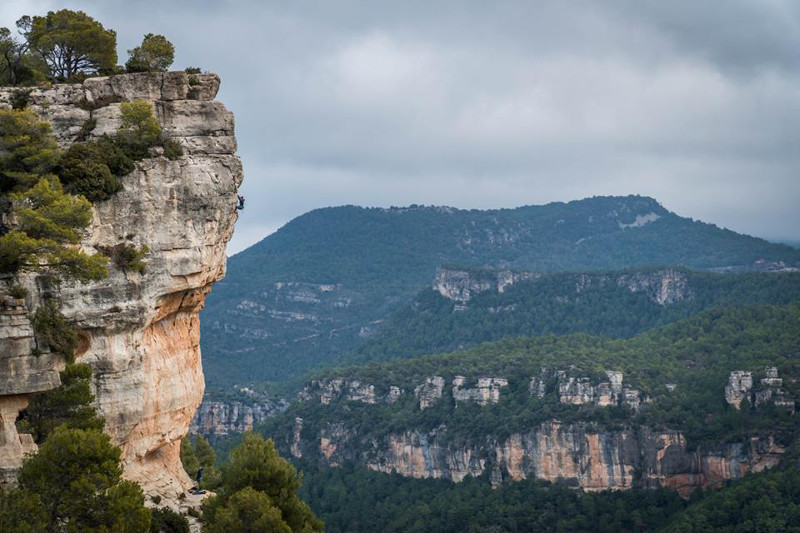
But by the time I finally left for Spain, it was the last thing I wanted to do. My motivation to “get away” disappeared, and I felt like there was no reason for me to be in this foreign country for seven months. There were, of course, awesome things to do in Spain that didn’t involve climbing: I met a whole new group of friends that I never would have gotten to know otherwise, I got to learn a new language and culture, and I got to live in a house with students from around the world. But I felt like I didn’t have a clear purpose in being there. Being in a foreign place without the one constant in my life—climbing—was terrifying at first.
I was living in Granada, which is a mid-sized city in Southern Spain. One climbing gym was inside of an apartment, the other was inside a very small building that had very few problems and a very juggy hold selection. Neither was a place where I could happily pass much time.
I felt trapped for a while, feeling like there was no place I wanted to go and spend time. Climbing had been a sponge for all my free time since I was twelve, and to not have that escape left me feeling lost and restless. To make matters more complicated, most of my friends—Americans and other Europeans on their own study abroad programs—did not understand my intense desire to scale vertical objects. At one point my Austrian roommate saw me crying about my frustrations and noted with astonishment that I cried about climbing like most people cry about relationships.
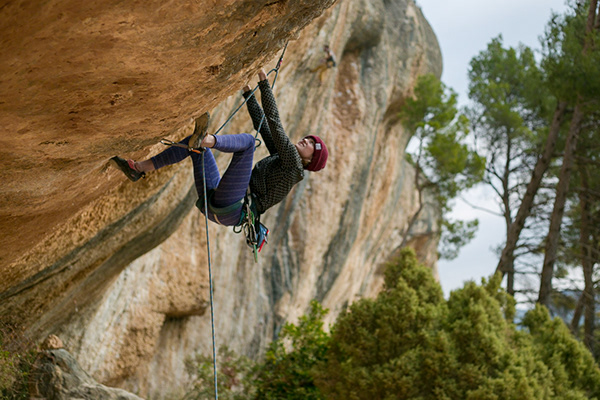
I know people reading this are probably saying, “Wait a second, you’re crying about the lack of climbing gyms when you were an hour’s drive from more sport climbing than all of California?”
And yes, it does sound kind of ridiculous. And if I would have been more excited to leave home in the first place, I think I would have been psyched. The problem was consistently finding similarly-motivated people to take me to said crags.
My first few times climbing outside in Spain were definitely interesting experiences. I quickly learned how to say words that had to do with climbing—like “belay,” “rope,” “draws,” slang like “drop knee” (which is bicicleta, not to be confused with “bicycle” in English), words for hold types, and how to properly cheer on a buddy. By the time I arrived in Granada (I spent my first month in Spain in another city), I was fairly conversational in climbing Spanish but nowhere near that level in actual Spanish. So once I got to the crag and found myself surrounded by people chatting in rapid-fire Spanish, I felt completely lost.
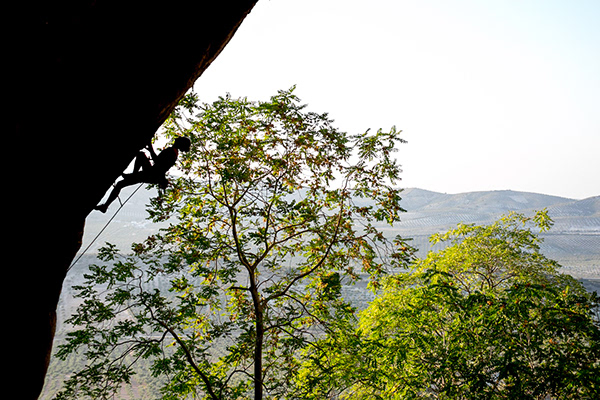
An example of this was the first time I climbed outside in Granada, when I ended up having to clean a route after dark. It would have been fine, but this route didn’t involve your usual cleaning procedure. Because the wall was overhung and right next to a river, I had to pass my rope through two nearly invisible leaver carabiners in order to prevent the rope from falling into the water from the top of the route. This was explained to me in the dark, while I was on the wall, in a very thick Andalusian accent, by a group of Spanish guys I had met that day. It took a while to clean that route.
One of my friends had a project at a crag called La Cueva de Archidona. I ended up spending a lot of time there, and it was there that I finally found my own project. I remember the first visit—hiking up through the olive tree grove up to the base of the cave, and then setting down our gear in the half-soil, half-bird-poop mixture that covered the ground and gave the crag a very distinct smell. My friends were rebolting the classic Kallisté (8c), a beautiful 40-meter line that went straight up a 45-degree overhung face. They pointed out a other few lines to me—some warm ups, a 7b, and a 7c+ that I couldn’t finish. Towards the end of the day I started eyeing a line with pre-hung draws that started on a black, nearly featureless face, then passed through a small roof onto a techy, slightly overhung section with a few tufas. It was 8b, a line called Silvergirl.
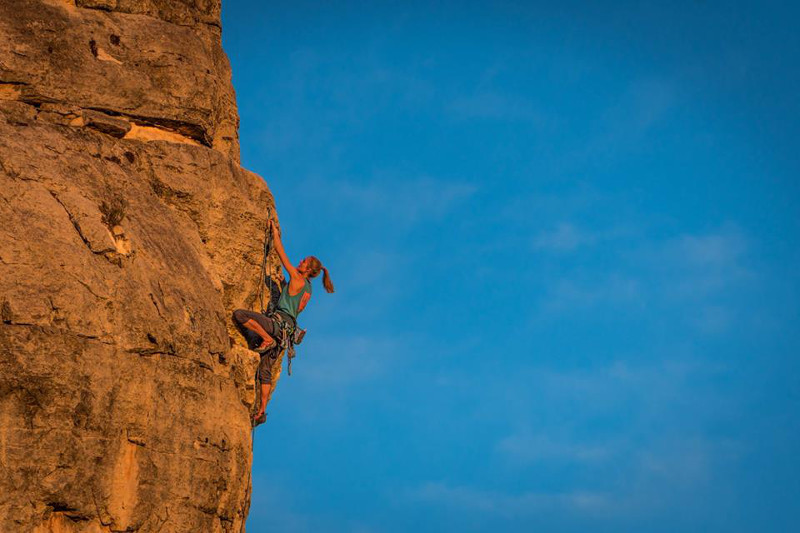
I proceeded to torment my belayer for about an hour, falling over and over at the third clip. I didn’t get any farther that day, and I saw that route as something I was just playing around on to see how far I could get. I hadn’t been training or even climbing consistently for about two months, and the 5.13a’s were feeling pretty impossible, let alone 5.14a.
Still, next time we went to Archidona, I asked for another epic belay. I’m still not sure what compelled me to get on it again. It was partly because it looked like a fun line, and partly because I knew it scared me and I wanted to challenge myself. I couldn’t stop myself from getting on it.
To my genuine surprise, I managed to hangdog my way not just past the third clip, but to the anchor. That’s when the light turned on in the back of my head, the one that says, “Wait, this actually might be possible,” and locks your brain into tunnel vision.
Over the next few months, I went back to that cave—and outside in general—as much as I could. At times, it was an exhausting effort. Back home, when I worked at the gym and had a social life practically inseparable from climbing, it was almost too hard to get away from climbing. But in Spain, where I didn’t completely speak the language of most of the climbers and where my social group was primarily Americans and other Europeans on their own study abroad sessions, staying in the climbing community and finding climbing partners was a very active, often frustrating process. I could have easily not climbed, and no one would have noticed.
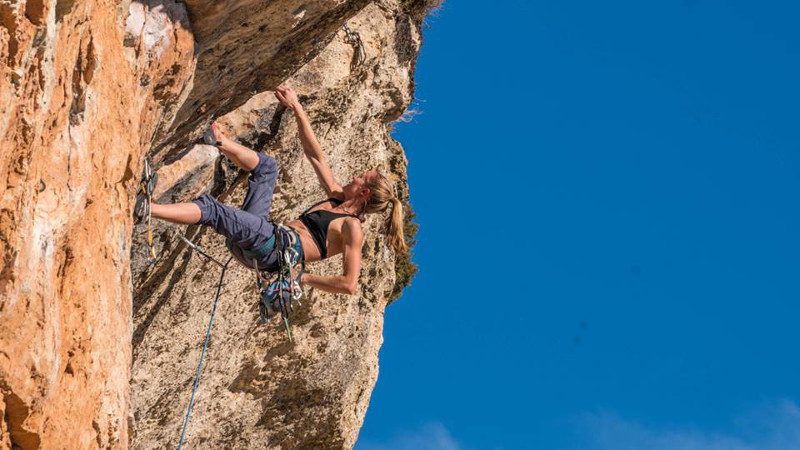
But even though it often felt pointless and lonely to keep asking for rides, I realized that I had to do it. It was frustrating to have to try hard to fit myself into the climbing community when I’d felt entitled to it before; but every time I came down off a route I just wanted to get right back on again. I realized that I really do climb because I love it, and some climbing is better than no climbing at all.
Climbing is amazing at any grade. It offers a meditative flow that I can’t find in anything else, and it’s one of the few times when my mind shuts up. At the same time, I love the challenge of climbing. It demands so much physical and mental strength, both in staying focused on the wall and not giving up after a string of failures.
It was also incredible to connect with people from around the world through climbing. People respect passion, and when you find other people who share that passion you will understand some part of them, regardless of any language or culture barrier. It doesn’t really matter how good you are, either. What matters is how stubborn you are, how badly you want it, and how much you’re willing to give. I think that the “good” comes after, and that people recognize the drive just as much as, if not more than, the skill.
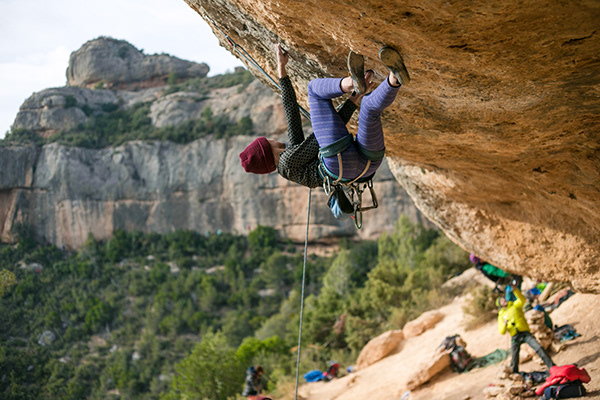
Through climbing I was able to connect with Granada in a different way than a lot of the other exchange students I knew. I got to spend time with people who lived there and go to places that weren’t built as tourist attractions. In a sense, I became a part of the daily life of people who saw Granada as a home, which was humbling and exciting.
Overall, Spain was a crazy experience. There were definitely downsides, but I’ll never forget how open people were towards me and how cool it was to become a part of the climbing community there. The trip helped me regain a lot of psych for climbing, and I can’t wait to get back on the many lines I left unfinished or untouched. (I managed to one-hang Silvergirl after falling at the second-to-last clip.) Unfortunately, due to some fanatical bouldering-induced tendinosis, I might have to wait a while. But I’m incredibly psyched to start getting outside again whenever I can. In the meantime I’ll be setting routes, studying Neuroscience at UC Davis, and of course, rehearsing the beta for First Round First Minute (9b).

